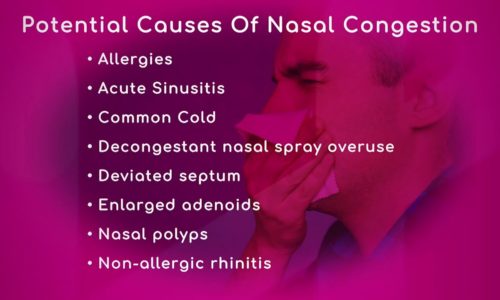Can some pets make people sick? |

Last article we looked at “good” aspects of pet ownership, ways that pets can contribute to our health and well-being. This week, we’ll look at animals that many authorities consider to be inappropriate as pets. We’ll also consider some of the illnesses that can be transmitted from animals to humans.
The Bad-Inappropriate Pets: According to the American Academy of Pediatrics (AAP), all of these are considered to be inappropriate as pets for kids under age 5:
- Reptiles (turtles, snakes, lizards, iguanas)
- Rodents (hamsters, gerbils, guinea pigs, chinchillas, hedgehogs, prairie dogs, mice, rats)
- Amphibians (frogs, toads, salamanders)
- Ferrets
- Baby poultry (chicks, ducklings, goslings, turkeys)
- Monkeys
- Illegal exotic animals
AAP concerns include the potential for these animals to bite, trigger allergies, or spread disease and infection. Likewise, even though veterinary science is dedicated to the care of all animals, a policy statement from the American Veterinary Medical Association (AVMA) states that it “has concerns about animal welfare, husbandry, infectious diseases, public health and safety, and environmental impacts relative to ownership of wild animal species and their hybrids.” A specific concern of the AVMA is that people may find that they are unable to care for a wild species with the possibility that the animal will become neglected or released into the environment.
The Ugly-Human illnesses related to animal contact: The following are illnesses that can spread from infected animals to humans. Fortunately, these diseases occur infrequently, and are more likely to occur from exposure to feral animals or those animals considered to be less appropriate as pets.
Toxoplasmosis is a parasitic disease that is of particular concern in pregnant women. If the disease spreads from an infected mother to her fetus, there is the potential for developmental malformations or miscarriage. Toxoplasmosis can be passed to people from contaminated cat feces, so pregnant women are advised to avoid cleaning cat litter boxes or coming in contact with dirt where cats may have been. Most people who get toxoplasmosis do not get sick, but some people will get swollen glands, muscle aches and feel as though they have the “flu”. Others who are more likely to get sick with toxoplasmosis include young children, organ transplant patients, people with HIV/AIDS and people getting treatment for cancer.
Rabies is a rare disease caused by the rabies virus. People think of dog bites being a common method of contracting this disease, but actually, most cases of rabies are due to bites from wild animals, especially raccoons, skunks, bats, foxes, and coyotes. In recent years, most of the cases of human rabies attributed to dog bites in Americans were contracted in foreign countries. The reduced prevalence of rabies in pets can primarily be attributed to mandatory vaccination policies in this country. It can take several weeks for symptoms to develop following exposure, but once they do, the disease is usually fatal. Early signs include fever or headache, which can progress to neurological symptoms such as confusion or agitation.
Cat scratch disease is a bacterial disease that can develop as a result of being bitten or scratched by a cat. Swelling of the lymph nodes, especially those around the head, neck, and upper limbs, is a common feature of this illness. People with cat scratch disease may also develop fever, headache, fatigue, and poor appetite. Kittens are more likely to carry the bacteria, so avoiding any activity that may lead to cat scratches and bites is important in preventing the occurrence of this disease. Cat bites or scratches should be addressed immediately and by washing with soap and water. Should signs of an infection develop (swelling, redness, drainage, etc.) medical attention for the consideration of antibiotic treatment should be sought.
Leptospirosis is a bacterial disease that is spread through the urine of infected animals. Many animals including cattle, pigs, horses, dogs, rodents, and wild animals can harbor these bacteria without showing any signs of the disease. Humans are usually exposed to the bacteria through contact with water, soil, or food contaminated with the urine of infected animals. Initial symptoms in humans include fever, chills, headache, muscle aches, vomiting, and diarrhea.
Salmonellosis is a diarrheal disease caused by the bacterium Salmonella. Salmonella is most commonly transmitted through contaminated food, but it can also be spread by a number of animals including reptiles (turtles, snakes, and lizards), amphibians (frogs and toads), and poultry (chicks, chickens, ducks ducklings, geese, turkeys), “pocket pets” (guinea pigs and hamsters), dogs, cats and birds (including pet and wild birds). This illness, which can include diarrhea, fever, and stomach pain, typically resolves on its own after a week. The best ways of preventing salmonellosis are to avoid handling or touching high-risk animals (e.g., turtles, water frogs, chicks, ducklings, etc.) and to wash hands thoroughly after touching potentially infected animals.
Psittacosis also known as ornithosis or parrot fever is an infection caused by a Chlamydia bacterium. Psittacosis is usually spread by inhaling dust from dried droppings from birdcages and by handling infected birds in slaughterhouses. All birds can potentially carry the bacterium, although pet birds (parrots, parakeets, macaws, and cockatiels) and poultry (turkeys and ducks) are most frequently involved in transmission to humans. Symptoms in humans include fever, chills, headache, muscle aches, and a dry cough with evidence of pneumonia on x-ray. Antibiotics such as tetracycline or doxycycline are often prescribed for treating infected people.
Most people would agree that the benefits of having a companion animal, particularly dogs or cats, far outweigh the potential risks. It is important, however, to understand that some pets are more appropriate than others and that even appropriate pets can harbor disease-producing organisms. Conscientious pet care, including providing all appropriate immunizations, is the best way to minimize the risk of contracting animal-borne diseases.
If you have any more questions just Ask Hanna, our health advisors are here to help.
Image: ©Shutterstock / Evgeniya Yantseva








